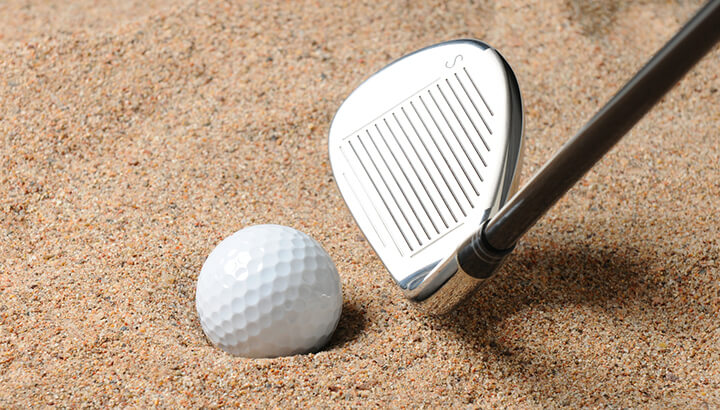If you’re new to the game of golf, you might not think much about sand bunkers, besides how to avoid them and how to get your ball out quickly if it’s trapped there. But if you’ve been an obsessive golfer for a while now (like many of us at Daily Birdie) you might have die-hard preferences about the different types of sand you’ll see in the bunkers, and which kind you like to play at your home course.
While golf course designers, greenskeepers and club owners may have a lot to think about when choosing sand fill types, us regular golfers don’t have much of a say in the matter (unless your club asks for input from members, which some certainly do). So what do you as a golfer need to know about sand? How to best deal with the different types.
Manufactured sand, coarse river sand, twice-crushed sand, soft, beachy sand, half-marble, half desert tan… there are lots of potential sources and combinations. The truth is, you don’t really need to know or be able to identify the origin of your sand type. You really just need to know if it’s thin or fluffy.
Soft or fluffy sand
So you’ve hit the hazard. How has your ball landed? Did it sort of sink down into the sand and become partially covered? When you walk through the bunker to your ball, do your feet sink down, making it hard to walk? If these things are true, you’ve probably got soft, fluffy sand to work with and it’s probably not too wet.
Here’s how to deal with it: Fluffy sand tends to act sort of sticky with the ball, so you need a longer swing and a good “explosive” hit. Don’t be afraid to take a “large divot with a very fast swing,” says Golf.com. Grab your sand wedge and try a swing that’s “three-quarters back and make a complete follow-through” for your best result.
Thin or hard sand
When sand is wet it tends to function as hard sand, which is actually easier to deal with in many ways. You have to be aware that hard or thin sand actually provides a lot less resistance than you may expect it to — much less than soft sand. Many people over-swing in hard sand for this reason. Take a fast swing with your wedge from “hip-high back to hip-high in your finish” and you’ll be out in one stroke, according to Golf.com.
Is one kind of sand better than another?
Some people certainly think so, but most of the differences really are a matter of preference. Half marble, mixed fill… pure white quartz? Most small, local courses have your standard run-of-the-mill stuff, but at Augusta National, you’d better believe they’ve got the special stuff. Everything about the expertly-manicured course is world class, including the course’s signature sand.
It is “pristinely white,” which makes the rich greens of the immaculate grass really stand out. “It’s called ‘Spruce Pine’ sand, named for the mining district in Western North Carolina in which it’s found,” says Masters.com. “It’s actually quartz, and it’s so pure that it prevents golf balls from burrowing into devious lies and has played a major role in computer technology.”
Even if you aren’t planning on making it to Augusta this year, you’re still likely to spend some time in the sand — and you don’t want to embarrass yourself. Remember your training, take a deep breath and get yourself out of that bunker!
— C. Pedroja
